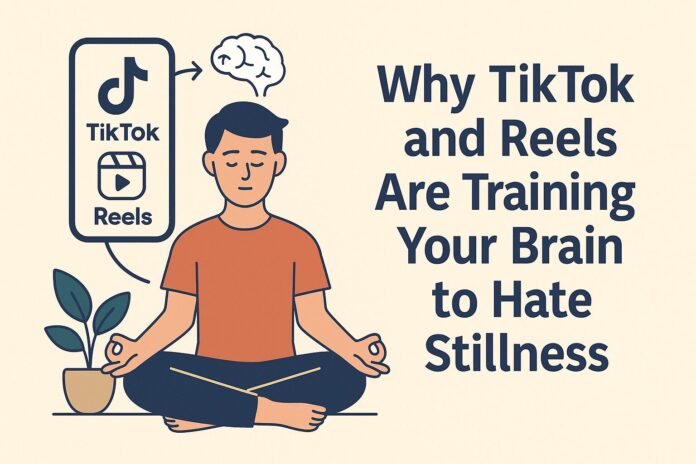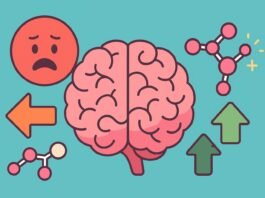Table of Contents
Ever feel like sitting still is… weird?
Social Media Overstimulation: You open your phone for “just a second,” and 30 minutes of Reels later, you’re not sure where the time went. Silence feels uncomfortable. Boredom feels unbearable. And stillness? Practically forbidden.
When was the last time you didn’t touch your phone for an hour?
If that question makes you pause, you’re not alone. Today we’re diving into a modern mental trap that’s silently rewiring your brain: how short-form videos are making stillness feel almost impossible—and what you can do to reset.
Why Social Media Overstimulation Topic Is So Relevant Today
The average Gen Z or Millennial scrolls through 1,000+ pieces of content per day—often without realizing it. Between TikTok, Instagram Reels, and YouTube Shorts, your brain is hit with a rapid-fire mix of sound, motion, and novelty, all designed to keep you swiping.
This kind of stimulation overloads your attention span. You’re constantly switching focus every few seconds, which can lead to a sharp drop in sustained concentration. It’s not your fault—it’s design.
And it’s not just about wasting time. It’s about what your brain starts craving (and avoiding) as a result.
Fast Content and the Brain: What’s Really Happening?
Your brain is wired to seek novelty and reward. Every time you scroll past a new, interesting video, your brain gets a small hit of dopamine—a feel-good chemical linked to motivation and pleasure.
Short-form videos take advantage of this mechanism by delivering endless novelty in quick succession. The result? A loop that keeps you seeking stimulation, while making calm, quiet moments feel… boring.
Over time, this trains your brain to expect constant input and avoid anything that feels slow, still, or effortful—like reading, focusing, or simply sitting in silence.
This is what dopamine fatigue feels like. It’s not that your brain is “broken”—it’s just overstimulated and under-recovered.
Signs You’re Affected by Social Media Overstimulation
Wondering if this is you? Here are 5 signs to watch for:
- You can’t go 10 minutes without checking your phone
- You feel anxious or restless in silence
- Everything feels boring unless it’s fast-paced or flashy
- You scroll even when you’re not interested
- You struggle to enjoy books, deep conversations, or focused tasks
If 3 or more of these hit home, your brain may be craving a digital reset.
How to Start Reclaiming Stillness: Micro Reset Suggestions
You don’t need to quit social media forever. But small, intentional changes can help you rebalance your brain and recover your focus.
Here are a few micro resets to try this week:
1. Mute Non-Human Notifications
Turn off alerts from apps that don’t involve real people (e.g., sales, algorithm pings, suggested content).
2. Set a Swipe Limit
Before scrolling, give yourself a rule: “5 swipes, then close.” This builds awareness and breaks auto-scroll mode.
3. Take a “No-Input” Break
Schedule 15 minutes daily where you don’t consume anything—no music, no podcasts, no scrolling. Just sit, walk, or breathe.
4. Replace Scroll Time with Journaling
Keep a notebook nearby. When you feel the itch to scroll, write down one sentence instead.
5. Create a Stillness Anchor
Pick one activity (like making tea, stretching, or petting your dog) to do mindfully, without multitasking. Let it be your daily reset point.
Quick Table: Scroll Habit vs. Stillness Reset
| Symptom | Reset Tip |
|---|---|
| Twitchy fingers | Lock phone away 30 mins |
| Mental fog | 10-min walk with no input |
| Passive scrolling | Write 1 line in a notebook |
Conclusion: Stillness Is a Skill—And You Can Relearn It
Social Media Overstimulation: You don’t have to delete every app or live in a cabin. But you can start with a pause.
Even one moment of intentional stillness per day can start to rewire your brain toward clarity, presence, and peace.
Try one tip this week and notice how you feel. Stillness might feel awkward at first—but over time, it becomes something your mind starts to crave.
Want a full plan? Read: Dopamine Detox 101: How to Reset Your Brain and Reclaim Focus



